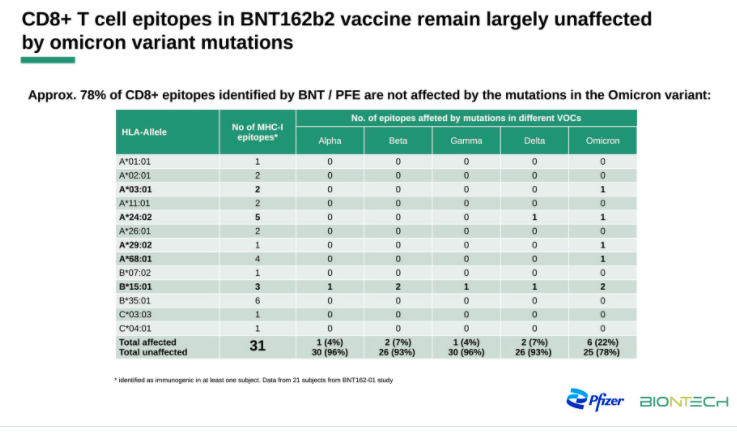Briefing on Pfizer/biontech neutralisation studies has begun. 19 or 20 seras (why don't they know which?!)
1/x
1/x

Is this analagous to delta? It escaped one dose, but was pinned down with two. Omicron escapes two, but cornered by three.
"We expect significant protection against omicron in those who have received the third vaccine" - Sahin
This looks good? T-cells largely unaffected. 80 per cent of epitopes don't contain mutations. "We believe that T-cell responses induced by vaccination will still be active" 

First data I've seen on variant vaccines. "What we have observed is booster dose with variant vaccines in people received two doses of pfizer induces strong neutralising antibody responses equal or higher than those observed with boosting wild type." Look at Alpha 

Summary here:
"Due to presence of B and T cell memory....we expect that two doses of our vaccine may still induce protection against severe disease." -Özlem Türeci
"Due to presence of B and T cell memory....we expect that two doses of our vaccine may still induce protection against severe disease." -Özlem Türeci

"Data from omicron from heavily endemic regions, different age distriubution. We have to wait 2-3-4 weeks to understand severity in europe" - Sahin
On variant vaccine. "Several million doses in first month. How relates to main capacity TBD"
Worth noting as several have pointed out, other studies are less rosy.
https://twitter.com/CiesekSandra/status/1468465347519041539
• • •
Missing some Tweet in this thread? You can try to
force a refresh




















